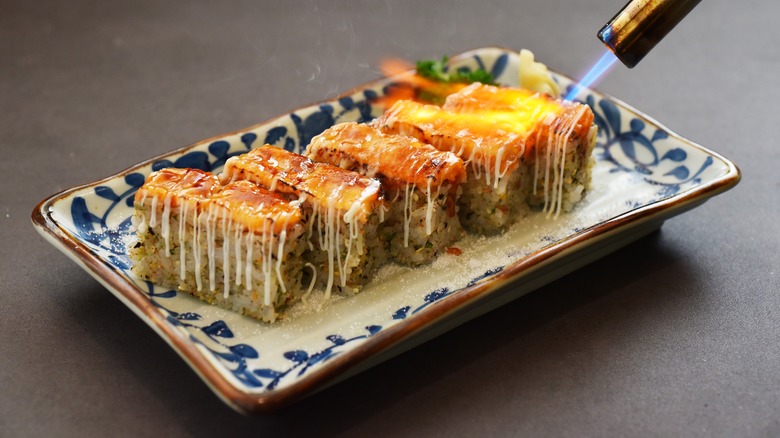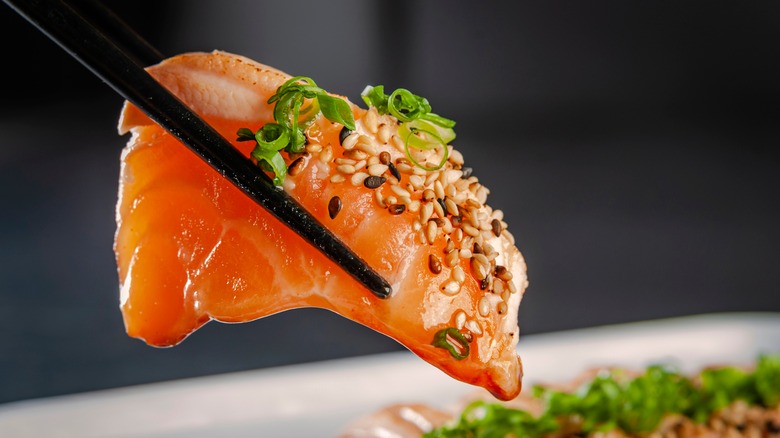The Technique That Makes Aburi Salmon Different From Regular Nigiri
Sushi comes in many types even with just one type of fish, like salmon. From straightforward rolled sake hosomaki rolls to larger pressed oshizushi, the variety of shapes is dazzling. And even one of the most well-known characteristics — raw fish — isn't consistent either.
An alternative version of nigiri called aburi involves using a blow torch on the top of a piece of fish, inviting a scorched element to the palate. Instead of focusing as much on the salmon's intrinsic flavor, the preparation style highlights the fish's textural components. The interior of the salmon is kept raw, while the exterior is lightly seared, with contrasting textures imbuing the fish with a sense of added creaminess. The rice shape is kept in nigiri form, with a curved shape and three-inch length, ready to be consumed all in one bite.
An additional element like ponzu sauce can add a touch of salty citrus notes, while in Kyoto, miso is brushed on for sweetness. All such elaborations showcase how the aburi technique allows the creation of nigiri with a twist.
Blow torch salmon to craft aburi nigiri
In addition to nigiri, the aburi technique transforms salmon in other applications, too. It works wonders for a salmon rice bowl, adding a more moist and fatty note on top of the starch. Plus, the method melds well with extra ingredient additions, whether it's avocado, a simple soft-boiled egg, or a mayo-based sauce.
Aburi is especially intertwined with salmon due to the fish's fatty nature. A bit of heat increases the fish's moisture, melting down the oils. The outer texture becomes charred, making it texturally distinct but not quite crunchy.
The technique can also be applied to other varieties of fish for delicious results. Buttery types like sablefish and black cod can be thrown under the torch, sometimes skin-on to yield a crispy, cracker-like skin. Since these fish aren't always enjoyed raw, they're also cured for a duration prior, yielding an inventive scorched and soft result.
Regular tuna is too lean for the aburi treatment, but extra-fatty grade otoro also turns out fabulously with a blow torch sear. The fat melts and infuses the fish with a hint of smokiness, showcasing the aromatic pay-off of this technique.

